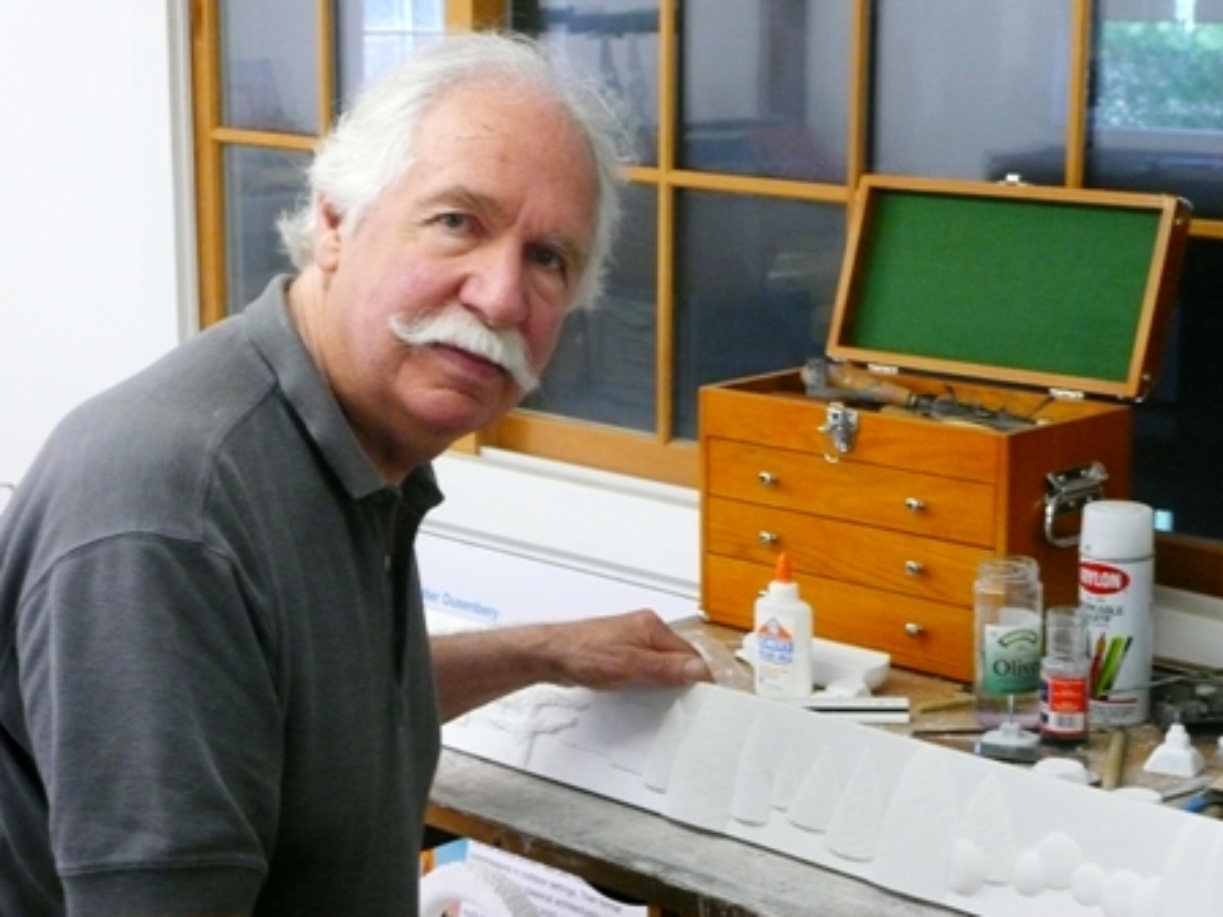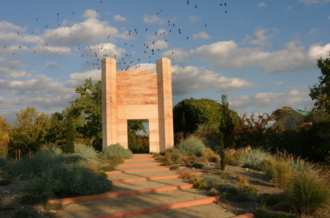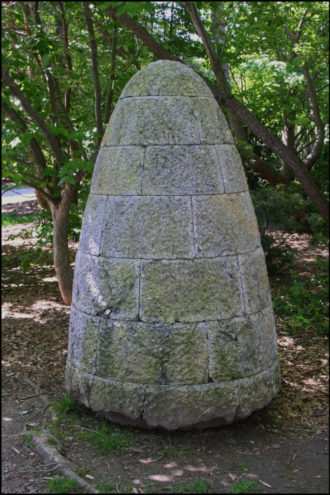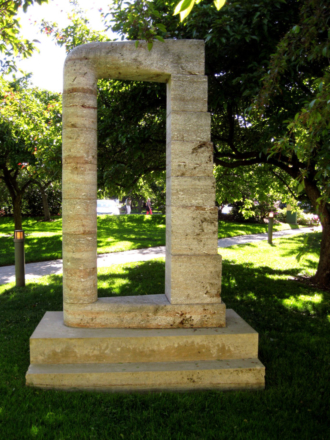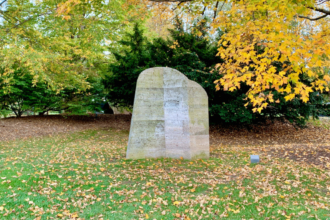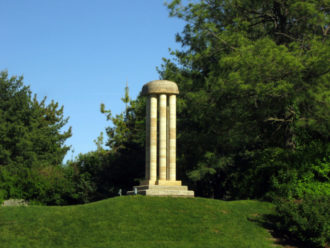Dusenbery’s career has been devoted to making sculpture in stone: marble, travertine, limestone, and granite. His sculptures are monumental in scale. Their formal vocabulary takes classical architecture’s visual language as a starting point, merging architecture and sculpture.
Dusenbery studied classical dance at the San Francisco Ballet and, later, modern dance in New York City at Juilliard with Jose Limon, Martha Graham, and May O’Donnell. Dusenbery believes his dance training informs a human- scaled kinesthetic relationship to his sculpture and its space. In 1960, he enrolled in the San Francisco Art Institute to study ceramics. He was an instructor of ceramics at the University of California Extension, San Francisco, during this period, eventually receiving an MFA from the California College of Arts and Crafts in sculpture, receiving an MFA in 1970.
He traveled to Tokyo after graduation, where he met the Japanese sculptor Tsutomu Hiroi who suggested that his work is perfect for stone. Hiroi introduced Dusenbery to the granite carving village of Aji on the island of Shikoku, and his first carved granite sculptures were completed here. Isamu Noguchi befriended Dusenbery and invited him to visit the stone working areas of Italy, to better understand the Western tradition. Once in Italy, he met Henry Moore and Marino Marini, who were both in residence at the time and had studios on either side of Dusenbery. These artists influence him to begin enlarging models to full scale sculptures. While also pursuing his own work, from 1971-1973 Dusenbery assisted Noguchi with a large public project, the Detroit Civic Plaza and Fountain, and also assisted him with the development and production of small Noguchi drawings to a collection of full-sized stainless steel sculptures. Also in 1973, Dusenbery was offered a one-man exhibition at the Bonino Gallery, NYC. Over the years he has exhibited his work in many places, including the Nassau County Museum of Art, Yorkshire Sculpture Park in England, and University of Virginia Museum of Art. Dusenbery was visiting sculptor at Harvard’s Graduate School of Design from 1980-1988. In 1988, after splitting time in New York City and Pietrasanta, he decided to relocate to upstate New York to build a home and studio in 1988. That was also the same year he received a large commission to build a fountain for the Fulton County Building in Atlanta. Following the completion of ‘Atlantacropolis’, Dusenbery withdrew from the gallery world and refocused his energy on site-specific commissions.
Seeking a large scale stone studio for projects closer to home, he discovered there were none. In 1995 he approached sculptor and patron of sculpture, J. Seward Johnson Jr., with the idea of creating a state-of-the-art stone carving studio, so that American sculptors would not have to travel aboard to realize their work. Johnson agreed to assist with the creation of a facility, if Dusenbery would direct it. The Stone Division opened in 1996 and featured the most advanced computer numerically controlled (CNC) stone-milling machines ever built for sculpture fabrication. The studio also had the ability to digitally scan three-dimensional forms for enlargement. Dusenbery continued to direct and produce work at The Stone Division until 2003. When it became reformed as the not- for-profit Digital Stone Project in 2004, Dusenbery was named president and remained in that position until 2008. More recently, Dusenbery received the commission for the entrance to the Presidential Trauma Center serving the Northwest in 2009. The entrance relief is 75’ long and 10’ high titled: In the Garden, a metaphor for man’s work with nature. It was installed in 2011 at the Harborview Hospital in Seattle, Washington.
